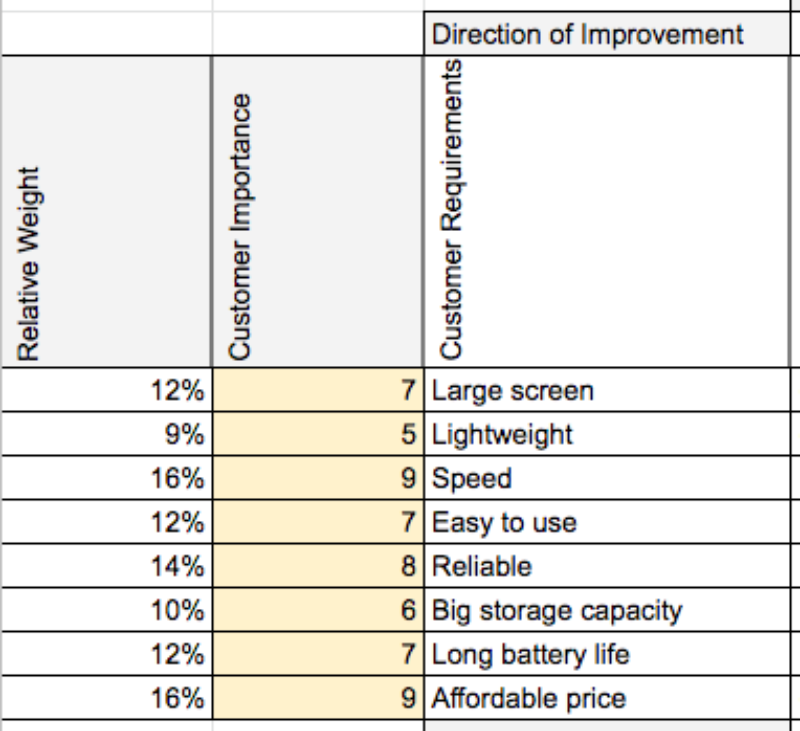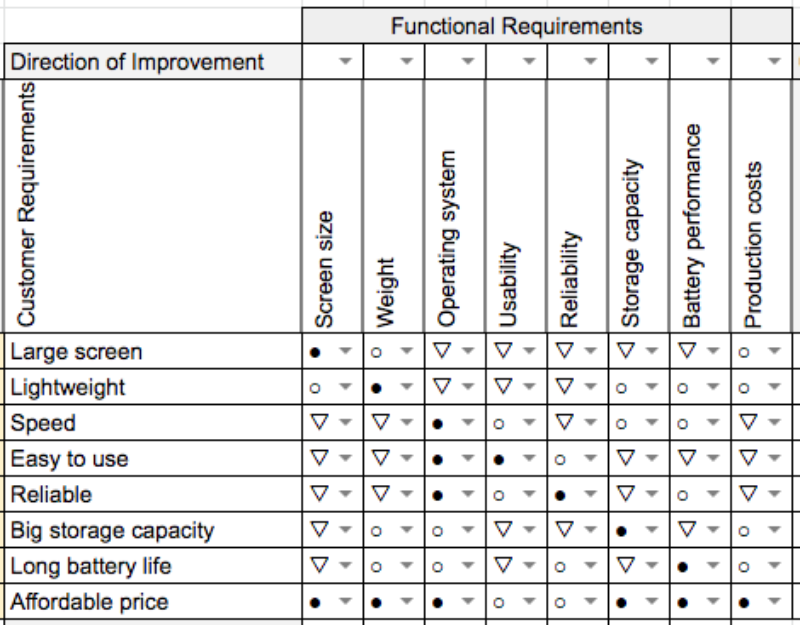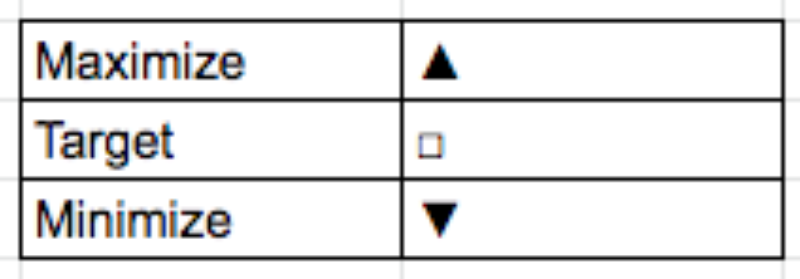Every product developed is typically designed to fulfill a specific need of the end-user it is intended for. However, when there is no proper understanding of the customer’s needs and expectations, the development process of products becomes misinformed, leaving such products doomed to fail.
To define the characteristics of products and services according to customer expectations, the so-called House of Quality can help. This article will explain how you can create a House of Quality in a practical way that will ensure your product development process is guided and optimized for consumer satisfaction.
Say hello to clearer, faster feedback
Get collaborative feedback right on top of your work with Filestage.
What is a House of Quality?
House of Quality simply refers to a product development process guided by the needs of the customers. It is a process of integrating customer needs into a written plan and prioritizing the product development based on what is vital to the customer.
What is QFD?
House of Quality is a part of a larger process named Quality Function Deployment (QFD). QFD is a methodology created to help businesses integrate the needs of the customer into product development. This process involves taking an inventory of market demands and customer desires and including these in the design requirements. QFD aims to provide a proper framework for addressing customer feedback.
Ultimately, the basis of the House of Quality and quality function deployment is the belief that products should be designed to reflect the desires, expectations, and needs of their target market. This guide will provide you with a House of Quality template (or QFD template) and explain how you can use it on your own and as a team.
Why do you need a House of Quality?
Following are some reasons every business should create a House of Quality.
Guidance for product design decisions
Customer needs can be all over the place and the product development process can easily become inefficient if those needs are not figured out. QFD helps businesses understand what features are mandatory and help to convince the prospect to buy the product. This makes it easier for product developers to create a logical and executable structure for an efficient development process.
Ensure customer satisfaction
The goal of QFD is to help businesses understand customers better than they understand themselves. A House of Quality template will not only help you figure out what your customers want and expect, but it will also help you focus on the vital features that are important for your target audience. This helps you create a product that completely meets the customer’s expectations, which ultimately increases customer satisfaction.
A more efficient development process
With a House of Quality template, once the customer requirements have been established through harnessing feedback loops, it becomes easier to pinpoint areas most critical to the customer.
This way, more resources, whether they are humans, machines, computers, construction materials, or disposable materials, can be properly allocated to those areas for quicker and more efficient development.
Download our free House of Quality template (QFD template)
The House of Quality is a data matrix that uses a design that looks like the outline of a house, as implied in the name. The diagram is created based on collected competitive and technical data. How the House of Quality takes shape may vary depending on the data used, but in all cases, the rendering will look like a house.
It is in read-only mode. So, feel free to make a copy or export it as a PDF to start working with it. Do you want to get the Excel version? It can also be downloaded after entering your email address.
How to create a House of Quality (in Excel)
In this section, we will show you how to create a House of Quality for any product you are developing. In this template, our example will be a tech company developing a new laptop.
1. Download a template
First off, you need a House of Quality template to proceed. You can create your own template in Excel or download and make use of a ready-to-use House of Quality template.
To save yourself some time, we recommend using our House of Quality template if you do not already have one.
2. Identify the customer’s needs
With your template ready, the next step is to identify your customer’s needs and sort them into categories. This is where research comes in.
Questions you should answer:
- What does the customer want?
- What does the customer consider a priority?
For example, in this House of Quality for the tech company, research shows that customers who want to purchase a laptop are interested in these qualities:
- Large screen
- Lightweight
- Speed
- Easy to use
- Reliable
- Big storage capacity
- Long battery life
- Affordable price
3. Create importance ratings for customer needs
In the next step, you need to define how important the respective features are to the customer, and how the features will be weighted. Now, rate each need based on its level of importance to the customer on a scale of 1 to 10, with 1 being a low requirement and 10 being a major requirement of the customer.
It’s pertinent to understand that customers can have multiple high and low importance requirements. This means more than one feature can have the same value. The vital thing is to ensure they are all correctly rated for optimal results.
For instance, our House of Quality example for the tech company would look like this:
- Large screen – 7
- Lightweight – 5
- Speed – 9
- Easy to use – 7
- Reliable – 8
- Big storage capacity – 6
- Long battery life – 7
- Affordable price – 9

4. Identify product design requirements
After listing out the customer needs and rating them, the next thing to take into consideration are the requirements and categories of the product.
Questions you should answer:
- How should the product please the customer?
- What features are important to satisfy the customer?
- What requirements should the product meet?
In this case, the product requirements for this House of Quality example would include:
- Screen size
- Weight
- Operating system
- Usability
- Reliability
- Storage capacity
- Battery performance
- Production costs
5. Identify relationship between customer needs and functional product requirements
Now you need to identify the relationship between each customer and functional requirements. So the question to answer is: How much does the product requirement affect the customer’s need?
To rate if the relationship is strong, medium, or weak you can use these symbols:

For example, the choice of the operating system will have a strong impact on the speed, ease of use, and reliability of the laptop. The battery performance will contribute to the battery life but also affects the price.

After you have added the relationship criteria our template will automatically calculate the importance rating sum.
6. Identify correlation of product design requirements
For this step, you will identify and complete the correlation matrix. This is done by adding arrows in the “direction of improvement” field for each functional requirement. If the feature should be higher you add an up arrow, if it can be lower, you add a down arrow.
For example, the screen size, the storage capacity, and the batter performance should be higher so you add an up arrow. The weight and the production costs should be lower, so you add a down arrow. For features that need no change, you can add the square symbol.

After that, you can determine in the correlation matrix whether the different functional requirements help or hinder each other. Therefore you add a (+) symbol if they positively affect each other and a (-) symbol if they hinder each other. When there is no correlation between features you leave the field empty.
7. Compare to competitors
No House of Quality template is complete without competitive assessment. The essence of competitor research in the product development process is to know how other companies in your industry currently rank for each of your customer’s needs and the product requirements.
Therefore you need to do a customer competitive assessment and a technical competitive assessment. This will help you determine how your products or services compare to the products or services of competitors.
The result of this assessment will provide more insight into important customer needs and product requirements you should focus on to outstand from the competition and find your unique selling proposition.
Optional: Share your House of Quality with colleagues to collect feedback. We encourage you to do this since feedback will help you improve your processes. More on this in the next section.

How to collaborate on the House of Quality, internally, or with a client
When you are working with the House of Quality, discussing changes with a team or client is important but can be cumbersome. Several emails with desired changes and updates to the House of Quality are sent around. This can be a nightmare.
Say hello to clearer, faster feedback
Get collaborative feedback right on top of your work with Filestage.
Luckily, there is an easy and fast solution. With Filestage, it’s super easy to share files, leave feedback, and collaborate on your House of Quality together with co-workers or customers.
All you need to do is following these five steps:
- Sign up for a free trial (no credit card required!)
- Upload your House of Quality as a PDF or image (or video, if you prefer a screencast)
- Invite your team members or clients to the project
- Collaborate on the House of Quality by leaving comments and annotations and discussing them in real-time
- Make changes to your House of Quality, upload a new version, and get the final approval
This will help you to complete your review and approval process up to 3x times faster and meet all your deadlines. As a result, you can begin product development sooner and speed up your go-to-market time. Also, you can use Filestage for any other file and content reviews.
Conclusion
And there you have it, a comprehensive guide to creating your own House of Quality. With this template, you can now easily build your House of Quality that will help you develop a product that customers love, want to purchase, and will continue to purchase.

